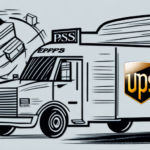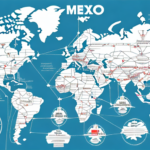Understanding How UPS Shipping Rates Work
UPS is one of the largest and most reliable shipping companies globally, trusted by individuals and businesses to send packages and goods worldwide. However, understanding how UPS calculates its shipping rates can be a complex and confusing task. In this article, we provide an in-depth analysis of how UPS shipping rates work and the factors that influence the cost of shipping your package.
How UPS Calculates Shipping Rates Based on Weight and Distance
The primary factors determining UPS shipping rates are the weight and distance of the package. Heavier packages incur higher shipping rates, and the farther the destination, the more expensive the shipment becomes. UPS utilizes an advanced system that calculates rates based on these variables, ensuring that each package's cost is fair and proportionate to its size and destination.
Additionally, UPS considers the package's dimensions when calculating shipping rates. Larger packages occupy more space on delivery vehicles, requiring more resources to transport. As a result, UPS charges higher rates for larger packages, even if they weigh the same as smaller ones.
The type of service selected also impacts UPS shipping rates. For instance, faster delivery options like overnight or express shipping are more expensive than standard delivery. Additional services such as signature confirmation or insurance can further increase the shipping cost.
Factors That Determine UPS Shipping Rates
Beyond weight and distance, UPS considers several other factors when determining shipping rates:
- Package Size: Larger packages may incur higher fees due to the space they occupy.
- Package Value: Higher-value items may require additional insurance or security measures, increasing costs.
- Contents: Certain contents may require special handling or packaging, leading to extra fees.
- Delivery Speed: Faster shipping options come at a premium.
- Destination: Shipping to remote or rural areas may result in higher fees due to increased transportation costs.
According to the Shipping Industry Report by Statista, the demand for expedited shipping services has grown by 15% over the past year, underscoring the importance of delivery speed in shipping rate calculations.
Understanding the Impact of Package Dimensions on Shipping Rates
Package dimensions—length, width, and height—significantly impact UPS shipping rates. Accurate measurements are crucial to avoid additional fees or delays. UPS offers tools like the UPS Shipping Calculator to help determine if your package qualifies for dimensional weight pricing.
Moreover, the destination affects shipping rates. UPS offers various shipping options, including ground, air, and international shipping, each with different rates based on the destination and service level selected.
Shipping Options Available with UPS and Their Corresponding Rates
UPS provides a wide range of shipping services tailored to different needs:
- Ground Shipping: The most affordable option, ideal for non-urgent shipments, typically delivering within 1-5 business days.
- Next-Day Air: The fastest service, guaranteeing delivery by the next business day.
- Second-Day Air: Guarantees delivery within two business days.
- Three-Day Select: Ensures delivery within three business days, suitable for time-sensitive but non-urgent packages.
Additional services include:
- Signature Confirmation: Requires the recipient to sign for the package upon delivery.
- Saturday Delivery: Allows for weekend deliveries at an extra cost.
- Dangerous Goods Shipping: Specialized services for hazardous materials, such as chemicals or batteries.
For a detailed comparison of UPS shipping options and rates, refer to the UPS Services page.
How to Save Money on UPS Shipping Rates with Bulk Shipments
Businesses shipping multiple packages can save significantly through UPS's bulk shipping options. UPS offers discounts for high-volume shippers, which can help manage and reduce overall shipping expenses. According to a report by Business Insider, bulk shipping discounts can reduce costs by up to 20% for large-scale shipments.
Utilizing UPS's online tools, such as the UPS Bulk Shipping tool, allows you to compare rates across different shipping options to find the most cost-effective solution. Additionally, UPS provides free packaging supplies for certain services, further reducing shipping costs.
The Role of Surcharges in UPS Shipping Rates
Surcharges are additional fees that UPS may apply based on specific factors like package size, delivery area, or delivery time. Common surcharges include:
- Residential Delivery Surcharge: Applied to packages delivered to residential addresses.
- Large Package Surcharge: Charged for packages exceeding certain size and weight limits.
These surcharges vary depending on the destination and shipping method. For detailed information on UPS surcharges, refer to the UPS Surcharges page.
How to Estimate UPS Shipping Rates Before Sending a Package
UPS offers several online tools to estimate shipping costs accurately:
- UPS Shipping Calculator: Enter package weight, dimensions, and destination to receive an estimated cost.
- Rate Charts and Guides: Provide insights into standard rates and additional fees.
It's important to note that estimates are based on standard delivery times. Expedited shipping or special handling will incur additional fees. Always review the chosen shipping options and associated costs before finalizing your shipment to ensure the best fit for your needs and budget.
Peak Season Surcharges: Understanding How They Affect UPS Shipping Rates
During peak holiday seasons, UPS may impose peak season surcharges to manage increased demand. These surcharges can significantly impact shipping rates and are typically applied during the busiest shipping periods, such as the weeks leading up to Christmas.
Peak season surcharges help UPS handle the surge in package volumes and ensure timely deliveries. The size, weight, and destination of your package will influence the extent of these surcharges. For example, shipping large, heavy packages to remote areas during the holiday season may incur higher surcharges.
Tips for Negotiating Better UPS Shipping Rates for Your Business
Businesses can negotiate better rates with UPS by:
- Analyzing Shipping Data: Present data on shipping volume, frequency, and destinations to UPS representatives.
- Exploring Discount Programs: Inquire about special promotions or programs tailored to your business needs.
- Consolidating Shipments: Grouping shipments can qualify you for bulk shipping discounts.
Preparing detailed shipping needs and demonstrating consistent shipping volumes can enhance your position in negotiations, potentially leading to significant cost savings.
Important Considerations When Choosing Between Different UPS Shipping Services
Selecting the appropriate UPS shipping service requires evaluating your specific needs, including:
- Package Size and Weight: Ensuring the service can accommodate your package dimensions and weight.
- Destination: Choosing a service that efficiently delivers to your target location.
- Delivery Timeline: Balancing speed with cost based on how quickly the package needs to arrive.
- Additional Services: Deciding if services like tracking, insurance, or signature confirmation are necessary.
- Environmental Impact: Considering UPS's sustainable shipping options, such as carbon-neutral shipping.
By carefully assessing these factors, you can select a UPS shipping service that ensures your package is delivered promptly, safely, and cost-effectively.
How to Track Your Packages and Monitor Their Delivery Status with UPS
UPS provides several tools to track your package's delivery status:
- UPS Tracking: Enter your tracking number on the UPS Tracking page to monitor real-time shipment progress.
- UPS My Choice: A free service offering enhanced tracking features, including delivery alerts and the ability to reroute packages.
Utilizing these tools ensures you stay informed about your shipment's status and can address any issues promptly.
Common Mistakes to Avoid When Calculating or Estimating UPS Shipping Rates
To accurately estimate UPS shipping rates, avoid the following mistakes:
- Incorrect Package Dimensions: Ensure accurate measurements to avoid dimensional weight pricing penalties.
- Inaccurate Weight:** Weigh packages precisely to prevent unexpected fees.
- Ignoring Destination Factors: Consider remote locations that may incur higher shipping costs.
- Overlooking Surcharges: Account for potential surcharges based on delivery area and package size.
Double-checking all shipment details can help prevent costly errors and ensure smooth delivery processes.
The Future of Shipping: Trends and Innovations That May Affect UPS Shipping Rates
The shipping industry is rapidly evolving with trends and innovations that could influence future UPS shipping rates:
- Automation and Robotics: Increased use of automation in sorting and processing can enhance efficiency and potentially reduce costs.
- Drone Delivery: The introduction of drone delivery could revolutionize last-mile shipping, offering faster and more cost-effective options.
- Artificial Intelligence and Machine Learning: AI-driven route optimization can reduce delivery times and operational costs.
- Sustainable Practices: Investment in eco-friendly technologies and green logistics can lead to sustainable shipping solutions.
Staying informed about these trends can help businesses anticipate changes in shipping rates and adapt their logistics strategies accordingly.
Understanding how UPS shipping rates work empowers you to make informed decisions for your shipping needs. By considering factors such as weight, distance, package size, and utilizing available tools and discounts, you can optimize your shipping strategy for cost-effectiveness and efficiency. Additionally, keeping abreast of industry trends ensures you remain competitive in a dynamic shipping landscape.




















